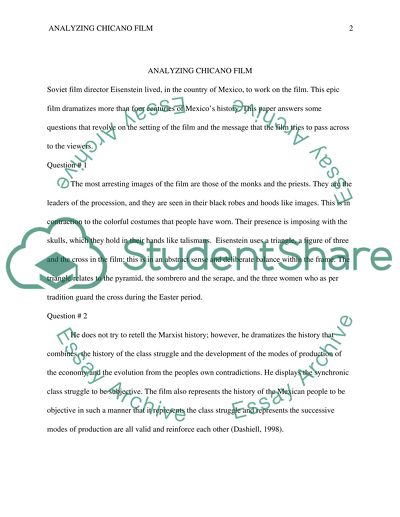Analyzing Chicano Film Essay Example | Topics and Well Written Essays - 750 words. Retrieved from https://studentshare.org/visual-arts-film-studies/1453075-analyzing-chicano-film
Analyzing Chicano Film Essay Example | Topics and Well Written Essays - 750 Words. https://studentshare.org/visual-arts-film-studies/1453075-analyzing-chicano-film.


